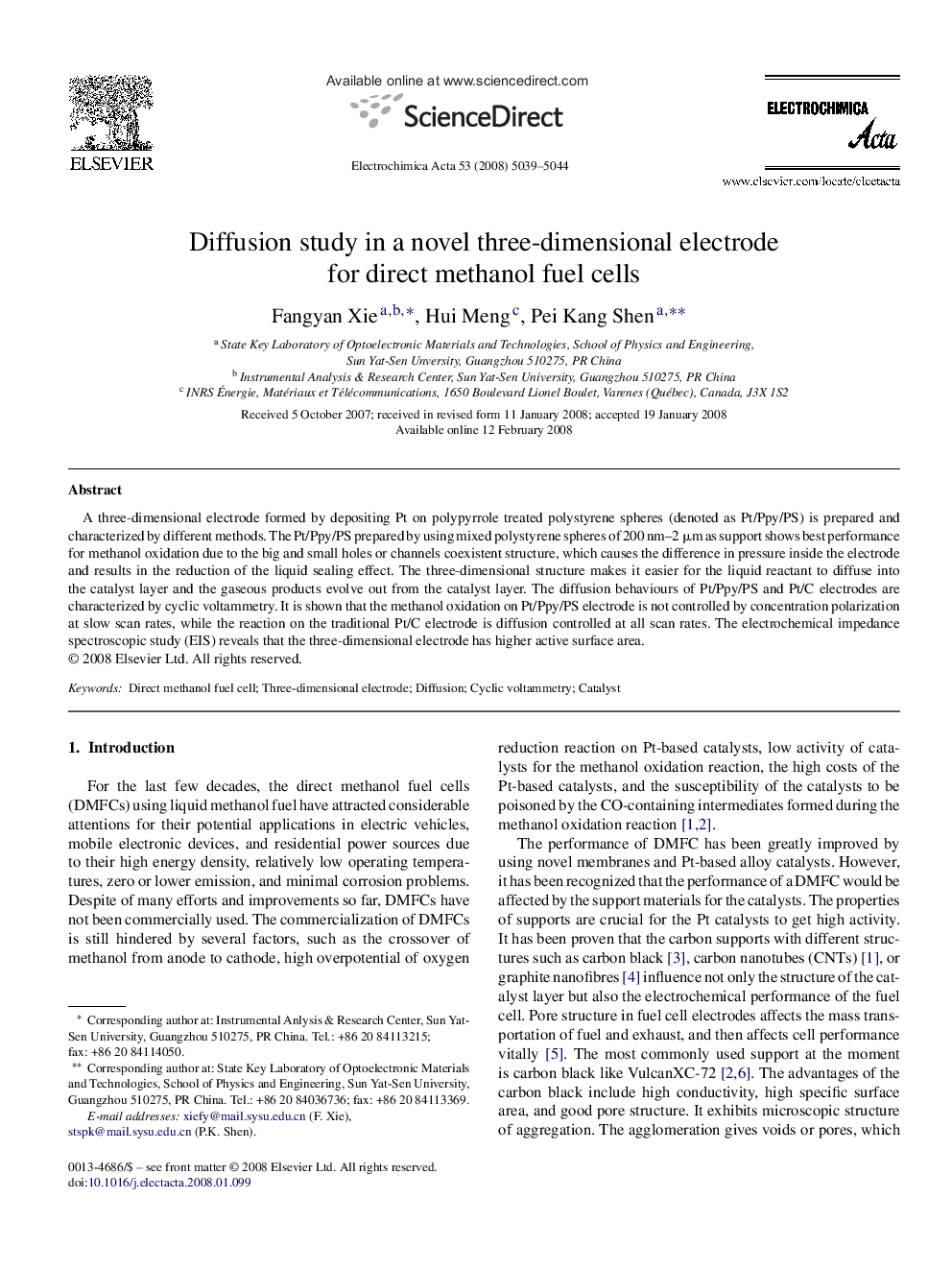| Article ID | Journal | Published Year | Pages | File Type |
|---|---|---|---|---|
| 192658 | Electrochimica Acta | 2008 | 6 Pages |
A three-dimensional electrode formed by depositing Pt on polypyrrole treated polystyrene spheres (denoted as Pt/Ppy/PS) is prepared and characterized by different methods. The Pt/Ppy/PS prepared by using mixed polystyrene spheres of 200 nm–2 μm as support shows best performance for methanol oxidation due to the big and small holes or channels coexistent structure, which causes the difference in pressure inside the electrode and results in the reduction of the liquid sealing effect. The three-dimensional structure makes it easier for the liquid reactant to diffuse into the catalyst layer and the gaseous products evolve out from the catalyst layer. The diffusion behaviours of Pt/Ppy/PS and Pt/C electrodes are characterized by cyclic voltammetry. It is shown that the methanol oxidation on Pt/Ppy/PS electrode is not controlled by concentration polarization at slow scan rates, while the reaction on the traditional Pt/C electrode is diffusion controlled at all scan rates. The electrochemical impedance spectroscopic study (EIS) reveals that the three-dimensional electrode has higher active surface area.
